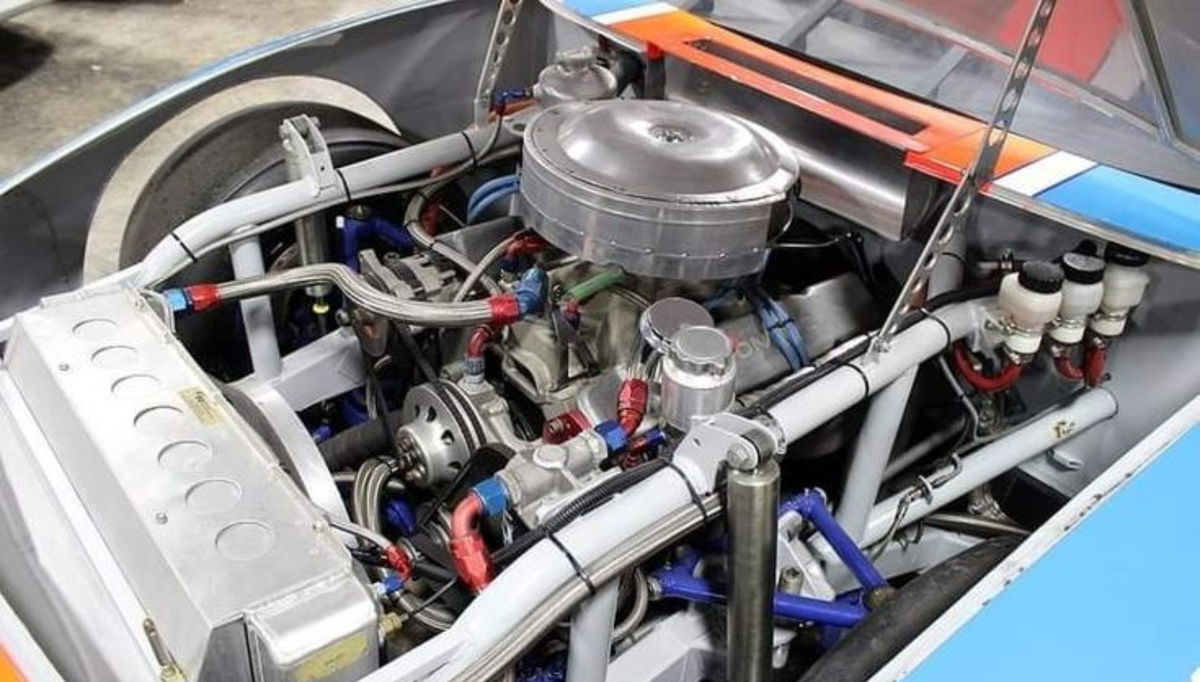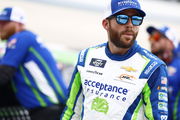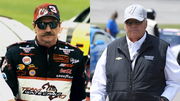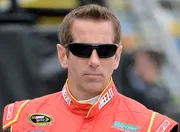
Imago
via Pinterest

Imago
via Pinterest
Horsepower has long served as stock-car racing’s symbolic heartbeat, a measure of status, ruggedness, and raw competitiveness. In the 1980s, Cup engines routinely churned out between 600 and 650 horsepower, allowing qualifying speeds to exceed 210 mph at Daytona and Talladega before safety concerns led to restrictor plates being introduced following Bobby Allison’s airborne crash in 1987. By 2014, cars produced near 900 hp under carburetion and before major aero kits took shape. However, NASCAR has since dialed back output from 750 hp in 2015, down to 550 hp in 2019, before settling at 670 hp with the Next Gen car’s debut in 2022. This trimming of power was driven by safety, cost concerns, and an emphasis on tighter parity. Past legends like Richard Petty, Dale Earnhardt, and Bill Elliott thrived in that high-power, high-risk environment. But as horsepower shrank, dissatisfaction grew, creating pressure for change behind the scenes.
Watch What’s Trending Now!
Across the Cup garage, a growing chorus of drivers made it clear that the current 670 hp package just doesn’t cut it on short tracks. Joey Logano summed up the sentiment, saying, “We want more power. It increases tire wear. It makes the track wider. And it’s more bada–.” Meanwhile, Kevin Harvick opined that the sport probably needs more than 1,000 hp to truly bring back the visceral spectacle, even if only on selected circuits. Josh Berry, mentored by Dale Earnhardt Jr. and revered as a short-track ace, delivered perhaps the most damning critique, saying, “It definitely needs more… how much more it is going to need to move the needle, right?” Berry questioned whether a modest 100-hp bump would meaningfully improve racing quality on tracks like Martinsville and Bristol. But the moment of change might finally be closer than ever.
ADVERTISEMENT
Horsepower — the next big shift in NASCAR’s competitive balance?
On SiriusXM NASCAR Radio, Senior Vice President of Competition Elton Sawyer confirmed a significant move is underway: NASCAR believes a horsepower increase is warranted, but any change won’t come until 2026 at the earliest. Sawyer explained that the league is focused on defining which venues qualify as short tracks, a tricky distinction given markets like Loudon and Dover that are one mile in length but function differently. The deliberation underscored NASCAR’s caution that what they have to understand is track character, not just distance, in making performance changes.
Behind the scenes, discussions with the engine builders and team owners are heating up. Sawyer revealed that NASCAR touches base daily with engine manufacturers to assess the feasibility of bumping the Next Gen car’s horsepower from its current 670 hp to a more robust 750 hp, if not higher, specifically for short-track racing. The team owner council raised the issue formally in recent league meetings, initiating talks on how such a change would impact costs, aerodynamics, and compliance with safety-engine regulations. While stadium-style tracks like Daytona wouldn’t see alterations, short tracks remain squarely in the spotlight.
NASCAR insiders also confirm that power is not only “on the table,” it’s now a daily agenda item, with senior leadership actively engaging engine builders and team owners. As NASCAR managing director Mike Forde previously shared on Hauler Talk, “It was something we proactively brought up to have a further discussion of improving the short-track package.” On the other hand, NASCAR’s seven-time champion and enduring legend, Richard Petty, also called for a return to raw power in Cup racing. As he recently reflected, “The way to make them more exciting is give them more horsepower, and let them run faster. The faster they run, the more the driver has to stay on his toes.” He added that when cars race at 200 mph instead of 185, the field inevitably separates driver skill rather than relying on pack tactics and publishing parity.
ADVERTISEMENT
On @SiriusXMNASCAR, Elton Sawyer was asked about a potential power increase.
Per Sawyer, #NASCAR thinks a power increase is the right move, but wouldn’t happen until 2026, at the earliest. The current challenge is deciding which tracks would get the short track increase.
— Joseph Srigley (@joe_srigley) August 5, 2025
As noted by a NASCAR insider, “For additional context, Sawyer notes that there are some intricacies involved in determining what qualifies as a short track. Loudon is a mile-long but races like a short track, Dover is a mile-long but has higher speeds, etc.” A horsepower increase on short tracks could raise corners’ entry speed by 8-12 mph and straightaway speeds by as much as 15 mph, according to past NASCAR testing data at venues like Richmond and Phoenix. This boost would require more braking and throttle modulation, leading to higher tire degradation rates, potentially 15-20% faster wear based on Goodyear simulations. By making cars harder to drive, especially in traffic, the change could create more passing opportunities and reduce the aerodynamic dependency that has plagued recent short-track races.
ADVERTISEMENT
With engineering tests still pending and NASCAR aiming for improvements on the next short-track race late this summer, the empowered decision now rests on balancing performance gains with cost and safety imperatives.
Top Stories
Ross Chastain Labels NASCAR Driver “The Most Punchable Face” to Excuse Himself Over Punchgate Controversy

Jimmie Johnson Poaches Richard Childress’ Key Ally Ahead of NASCAR 2026 Season

When Rick Hendrick Walked Away From $1,000 to Avoid Dale Earnhardt Sr’s Wrath

NASCAR’s Next Big Villain Named as Denny Hamlin Enters Fans’ Good Books

Brad Keselowski & Co. Pays Emotional Tribute to Greg Biffle With Special No. 16 Memorabilia

Drivers split on the risks and rewards of more power
From the 350-600 hp days of “Aero Wars” to the screaming 850 hp peak, the sport has long balanced speed against control. Now, the current 670 hp limit has some drivers frustrated. Dale Earnhardt Jr. isn’t calling it an “illusion,” but he believes the issue runs deeper than raw power, “I think that Michael McDowell is correct in that the pro horsepower isn’t what’s wrong with this race car, and this is a very small change, and it might visually look exactly the same… if we just go to Martinsville and do this.”
ADVERTISEMENT
Junior warns more horsepower could be tougher on the tires, particularly at abrasive tracks like Martinsville, where asphalt straights meet concrete turns. The result? More tire wear, braking challenges, and the need for drivers to manage their equipment carefully. The risks are far from hypothetical. At the 2025 Kansas Speedway practice, five teams suffered flat tires. NASCAR Cup Series managing director Brad Moran explained, “Everybody is looking if there’s any speed, pushing the limits, which can create tire wear.”
Goodyear’s Rick Heinrich echoed this sentiment, noting that low rear air pressures and higher speeds “increase loads” and that once damage begins, “it’s going to happen pretty quick.” Despite the warnings, the push for more horsepower is gaining momentum, and the question now is whether the thrill will outweigh the risk. Only time will tell if NASCAR’s horsepower gamble will spark a new golden era of racing or open the door to costly chaos.
ADVERTISEMENT
ADVERTISEMENT
ADVERTISEMENT
ADVERTISEMENT

